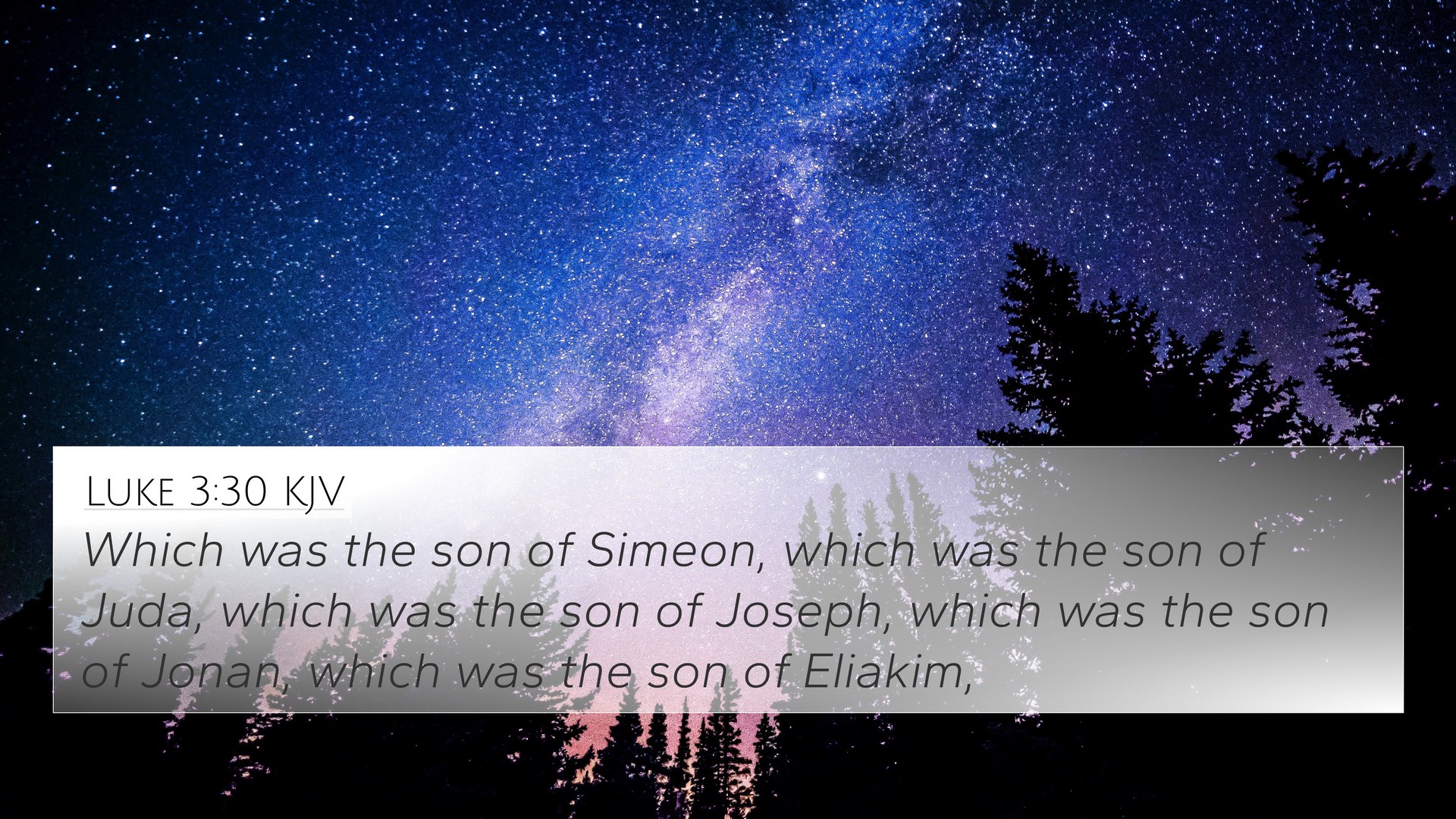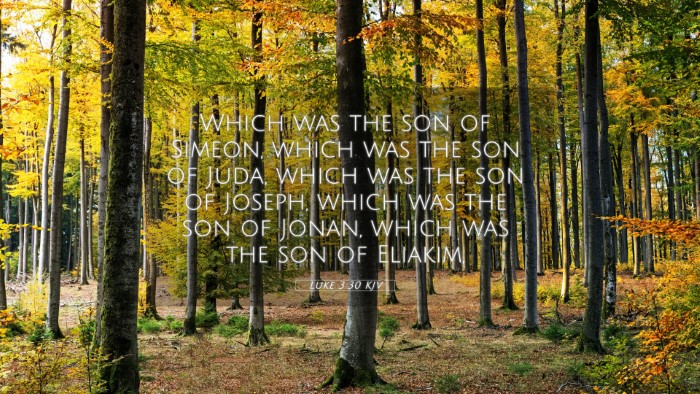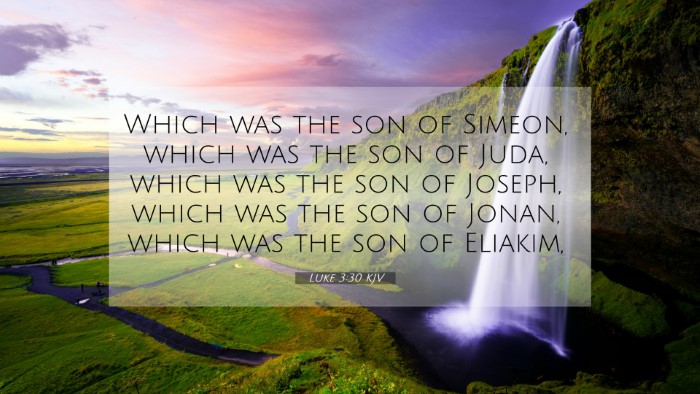Understanding Luke 3:30
Luke 3:30 states, "And the son of Levi, the son of Simeon, the son of Andrew," emphasizing the lineage and generational connections of Christ as highlighted in the genealogies provided by the Gospels. This verse, while brief, contains rich theological significance and interconnects with broader Biblical themes and narratives.
Key Themes in Luke 3:30
- Genealogy and Heritage
- Fulfillment of Prophecy
- Establishment of Christ's Authority
- The Role of Lineage in Jewish Culture
- Connections to the Old Testament
Commentary Insights
Matthew Henry's Commentary: Henry emphasizes the importance of tracing Jesus' lineage, noting that it reinforces the authenticity of His role as the Messiah. This genealogical line from Levi signifies not just tribal heritage but also an ongoing covenant through which God fulfilled His promises to Israel.
Albert Barnes' Commentary: Barnes elaborates on the significance of the line of Levi, linking it to the Levitical priesthood. He suggests that by including these names, Luke seeks to affirm Christ's legitimate claim both to spiritual authority and to His heritage. It introduces Jesus as the high priest of a new order.
Adam Clarke's Commentary: Clarke highlights the implications of such genealogies, focusing on the historical value and how they serve to link the New Testament back to the Old Testament. He points out that this serves as a reminder for believers regarding God's faithfulness across generations.
Connections with Other Bible Verses
This verse interlinks with multiple passages throughout the Bible, enriching our understanding and inviting deeper study. Here are some vital Bible cross-references:
- Matthew 1:1-16: The genealogy of Jesus highlighting His royal lineage.
- Hebrews 7:14: Identifying Jesus' lineage from Judah rather than Levi, indicating a change in priesthood.
- 1 Chronicles 6:1-15: The Levitical lineage established in the Old Testament.
- Luke 1:32-33: Prophetic identity of Jesus linked to David's reign.
- Romans 1:3: Confirming Jesus as descended from David according to the flesh.
- Revelation 5:5: Jesus as the Lion of the tribe of Judah, reinforcing His royal heritage.
- Isaiah 11:1: The prophetic coming of a shoot from the stem of Jesse.
- Jeremiah 23:5: The prophecy of a righteous Branch from David that will reign.
- Luke 3:23: Direct account of Jesus’ genealogy, confirming His earthly lineage.
- Hebrews 4:14: Jesus as a great high priest, linking back to the Levitical priesthood.
Utilizing Cross-References
When engaging in Bible cross-reference studies, it's essential to identify not just the genealogical significance but also the thematic connections. By utilizing tools such as a Bible concordance or Bible cross-reference guide, scholars can explore how various passages interact and enhance the understanding of Christ's mission.
How to Use Bible Cross-References
- Identify key themes in your current study verse and search for related passages.
- Explore cross-referenced materials to find deeper meanings and connections.
- Engage in comparative studies, such as examining the differences between genealogies found in Matthew and Luke.
- Utilize resources for Bible chain references to follow the lineage of thought across multiple scriptures.
Conclusion
In conclusion, Luke 3:30 serves as a brief, yet profound connection in the lineage of Jesus, echoing through centuries and linking to intertwined passages within Scripture. Understanding this can enhance one's appreciation of the Bible's cohesive narrative and the significance of genealogies in affirming Jesus' identity and purpose. This engagement with scripture through effective cross-referencing provides a transformative approach to Bible study, revealing the rich tapestry of divine revelation found throughout the text.


